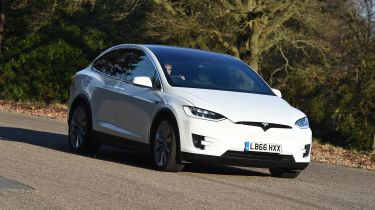Tesla Model X - Range, charging and running costs
The Model X benefits from a growing Tesla Supercharger network, while decent residual values are reassuring

As there’s not so much as a piston or camshaft in sight in the all-electric Tesla Model X, owners won’t have to worry about mpg fuel economy figures or CO2, as both are nil at the point of use. Of course, charging up at home will incur some electricity costs, but a full charge should cost considerably less than filling up with petrol or diesel.
The real figure to look into with electric cars is the range - and the Model X has an impressive battery set-up. The Plaid manages a claimed 337 miles - which isn’t bad considering it can also hit 60mph from rest in just 2.5 seconds. The slightly slower Dual Motor version can travel up to 348 miles, according to Tesla.
These figures are impressive, and mean the Model X will manage most commutes easily – and for several days on the trot without a recharge, in many cases. If you’re going on a longer trip, there’s also an increasing number of Tesla Superchargers around the country, which are charging stations that provide up to 172 miles of range in as little as 15 minutes.
A home charger is also available, which will keep your car topped up overnight ready for the next day’s drive to work or school. While they’re not as fast as the Superchargers, they’re still useful for making electric car ownership more practical.
Insurance groups
With every model in the range offering incredible performance, at a high price, with plenty of new technology on board, it’s no surprise that the Tesla Model X follows the Model S in being insurance group 50 across the board. That means it costs a lot to insure, which could offset some of the running cost savings compared to a less powerful diesel or hybrid SUV.
Depreciation
Data suggests that the Tesla Model X is a pretty strong performer on the used market. The Dual Motor version should 57-60 percent its list price over three years and 36,000 miles, while the Plaid model performs a little better retaining 62-65 per cent over the same period.









